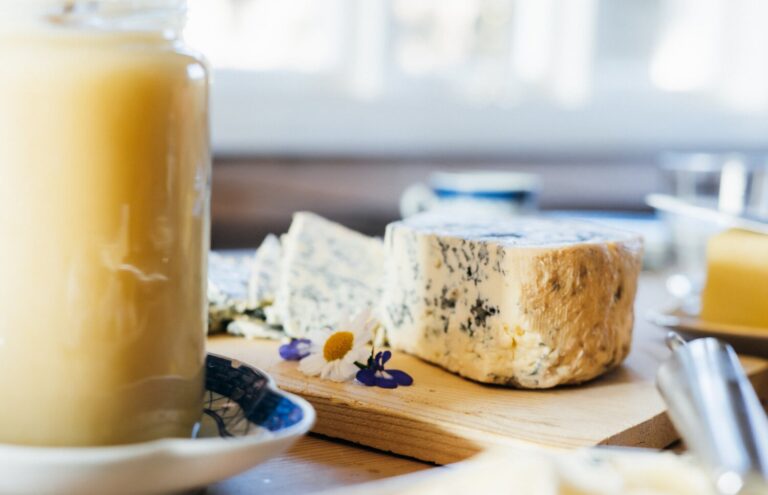There are hundreds of varieties of Italian cheese which originate from all over Italy. But the most popular around the world are those we grate onto pizzas, stir into pasta sauces or sprinkle over spaghetti.
It can be daunting to know what to do with cheeses such as Gorgonzola, Mascarpone, and Ricotta. Here is a rundown of five of the most popular Italian cheeses and how they are most commonly used in recipes.
Mascarpone is a Sweet Italian Soft Cheese
This silky, white soft cheese is used in both sweet and savoury recipes. According to the website I Love Cheese, it originates from the Lombardy region in the north of Italy, although there is some debate that it could have first been made near Milan.
It is scooped out of its container and stirred into tomato-based pasta sauces to achieve a rich pale creamy sauce. It is also one of the main ingredients for the Italian dessert Tiramisu, where it can be whipped with vanilla or sherry to make a decadent topping. It is also delicious spooned over stewed fruits.
Credits: Unsplash
Ricotta Cheese is Perfect with Stuffed Pasta
Ricotta is a soft white cheese, similar to marscapone, but less sweet and more firm. It has a white, slightly granular texture. Ricotta is commonly used to stuff pasta – for example in cannelloni and ravioli – and is often partnered with spinach.
Ricotta can also be used in dessert recipes. It can be baked into a cake, usually with the addition of citrus juice and zest as well as polenta. Ricotta can also be used to make cheesecake.
Credits: Unsplash
Parmesan – One of the Most Famous Italian Cheeses
Nowadays, Parmesan is made around the world – in the United States, Australia and Argentina. But for the cheese to be called Parmigiano Reggiano it needs to be made in Italy.
Originating in Parma, in northern Italy, it is a hard, salty cheese that crumbles slightly when sliced.
It is often finely grated and sprinkled over pasta dishes – but not seafood pasta – and can also be cut into shavings and added to salads.
Credits: Unsplash
A strongly-flavored cheese, it gives a cheesy, salty burst in the mouth in any dish. Parmesan can also be added to recipes for savoury biscuits or muffins.
It can also be grated and sprinkled over a dish that is to be baked, giving a crunchy crust.
Other common uses for Parmesan include being sprinkled onto pizza and also blended with basil, pinenuts, olive oil and garlic to make pesto.
Mozzarella is Traditionally Made from Buffalo Milk
Mozzarella is widely recognized as the white, stringy melted cheese that tops our pizza. It tastes fairly bland and has a milky white, rubbery appearance. When bought in packets, it is usually suspended in a milky liquid to keep it fresh which must be discarded before the cheese is used.
Mozzarella is made from buffalo milk and is believed to have originated from the Naples region of Italy, in the south of the country.
As well as the regular-sized balls of the cheese, Mozzarella can be bought in tiny little balls – called bocconcini – and these are perfect in pasta bakes or tossed into salads.
Mozzarella is often sliced and eaten fresh with basil and tomatoes to make the patriotic white, green and red “tricolore” salad.
Credits: Unsplash
Gorgonzola – One of the Best Known Italian Blue Cheeses
This sharp-tasting, greeny-blue-veined cheese has a firm texture which softens slightly after standing at room temperature. It is has a strong flavour and it can be used in small pieces to add flavour to pizzas, for example in the Quattro Formaggio (Four Cheese) pizza.
Originally made in Italy’s Lombardy region, Gorgonzola can also be broken off into soft chunks and added to soups. Its sharp, salty flavour is ideally paired with sweet fruits and is often served with caramelised pears and green leafy rocket. It melts well and can be used to make savoury tarts.
Credits: Unsplash
Italy has a wide range of cheeses to offer and these are only the five most popular.
Other Italian cheeses include Taleggio, Grana Padano and Provolone. However, even in this small selection the cheeses vary in flavour, colour and texture serving a variety of uses in the kitchen.
When it is appreciated how versatile these cheeses are, it is possible to get more creative and use them in both sweet and savoury recipes.
Permalink







